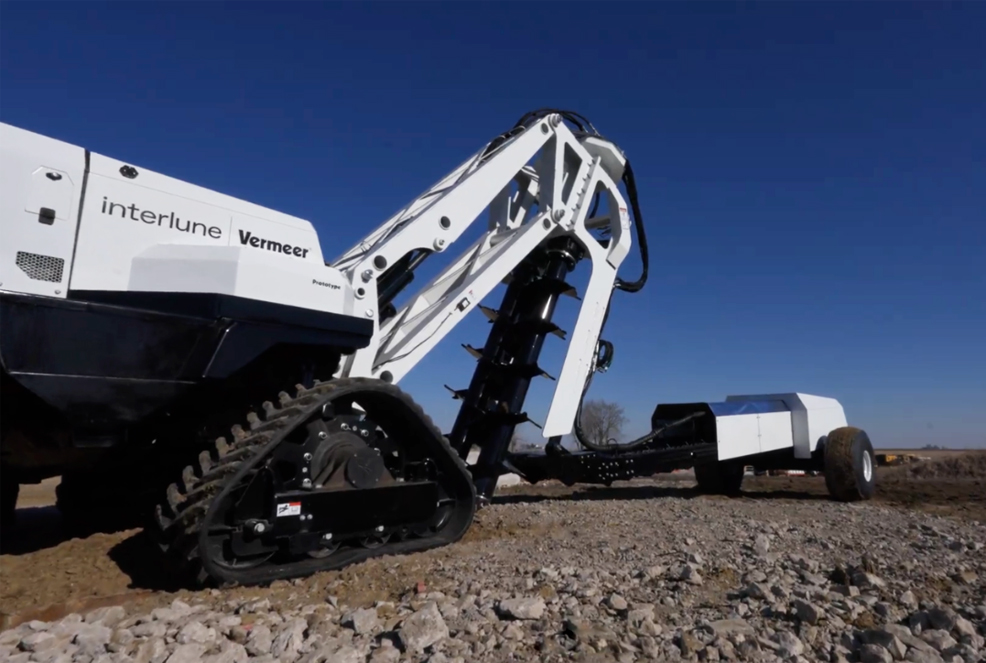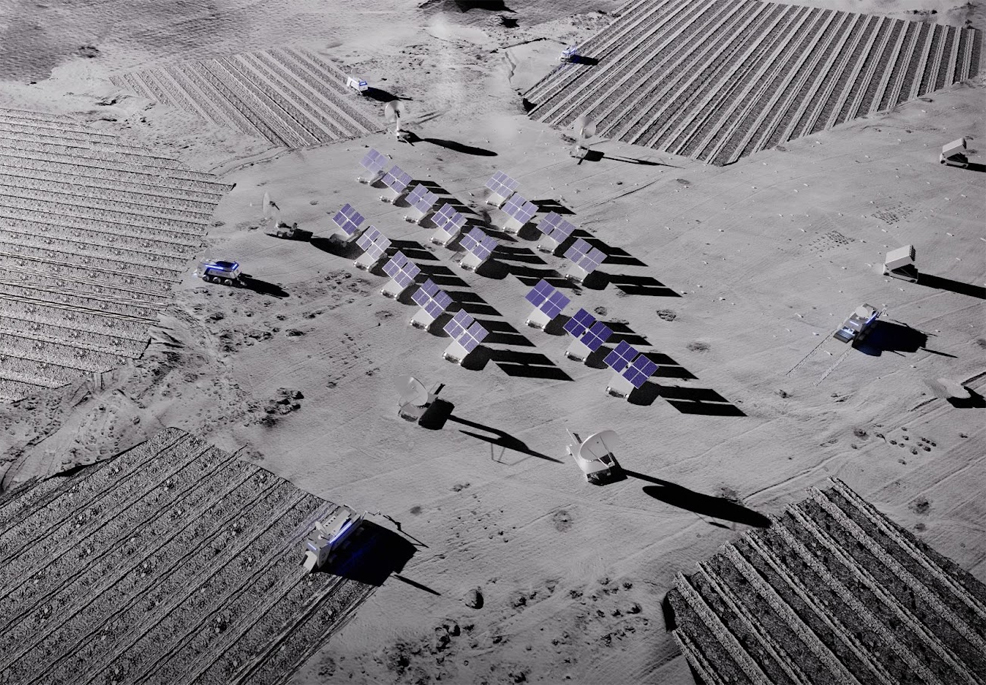
4th June 2025 Prototype excavator for Moon mining revealed A new era of lunar exploration moves closer to reality as a groundbreaking excavator prototype is set to unlock the vast potential of Helium-3, supporting progress toward limitless, clean energy on Earth.
Seattle-based Interlune has unveiled a full-scale prototype of an advanced excavator designed to mine helium-3 from the Moon's surface, partnering with industrial equipment manufacturer Vermeer Corporation. Helium-3, an isotope of helium, is extremely scarce on Earth, but common in lunar regolith. It holds significant promise due to its potential in fusion energy – a revolutionary, clean, and abundant power source that could transform energy industries worldwide. Founded in 2020, Interlune aims to sustainably commercialise space resources. The company has received support from NASA, the U.S. Department of Energy, and the National Science Foundation, demonstrating its credibility and innovation in lunar resource extraction technology. Vermeer Corporation, which has a 75-year history of industrial innovation, co-developed the new excavator. Jason Andringa, CEO of Vermeer and the grandson of its founder, will join Interlune's advisory board, combining deep-rooted engineering expertise with a passion for aeronautics. "Vermeer innovation has always been about finding better ways to do important work, and this project is no different," said Andringa. "Combining my personal passion for aeronautics and astronautics with Vermeer equipment that bears my grandfather's name to carefully and responsibly harvest resources to make our world a better place is something I'm incredibly proud of." Interlune's excavator is engineered to handle an impressive 100 metric tons of lunar regolith per hour. To put that into perspective, all six Apollo missions combined returned just 382 kilograms of lunar material – an amount Interlune's excavator could theoretically move in under 14 seconds. Unlike traditional trench-digging, it operates continuously, significantly reducing power usage, dust, and the force needed to move soil. "When you're operating equipment on the Moon, reliability and performance standards are at a new level," said Rob Meyerson, Interlune's CEO. "Vermeer has a legacy of innovation and excellence... which makes them the ideal partner for Interlune."
Helium-3's scarcity on Earth has intensified global interest in lunar mining. This isotope is critically important for medical imaging, quantum computing, and national security applications, and most excitingly, could enable fusion energy to become commercially viable. "The high-rate excavation needed to harvest helium-3 from the Moon in large quantities has never been attempted before," said Gary Lai, Interlune's CTO. "Vermeer's response to such an ambitious assignment was to move fast. We've been very pleased with the results of the test program to date and look forward to the next phase of development." Interlune is advancing its proprietary four-step resource extraction process: Excavate, Sort, Extract, and Separate. The full-scale prototype now officially unveiled marks a critical milestone, following successful sub-scale tests last summer. Interlune's next steps include further testing in simulated lunar gravity conditions on parabolic flights, and refining the separation technologies at their Seattle-based cryogenic laboratory. Looking forward, Interlune plans to launch a Resource Development Mission in 2027 to validate helium-3 concentrations at potential lunar harvesting sites and to test extraction methods on a small scale. A more ambitious Pilot Plant is planned for 2029, intending to demonstrate the entire operational cycle, from excavation to delivery of lunar-derived helium-3 to customers on Earth. By the early 2030s, Interlune hopes to operate a full-scale plant on the Moon, routinely harvesting and delivering helium-3. Over the longer term, the company aims to expand its lunar operations – harvesting additional valuable resources such as rare Earth elements and rocket propellants – to boost humanity's capabilities in space and, eventually, support a robust and sustainable lunar economy.
Comments »
If you enjoyed this article, please consider sharing it:
|
||||||









